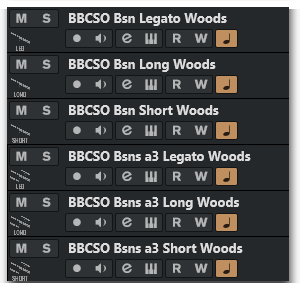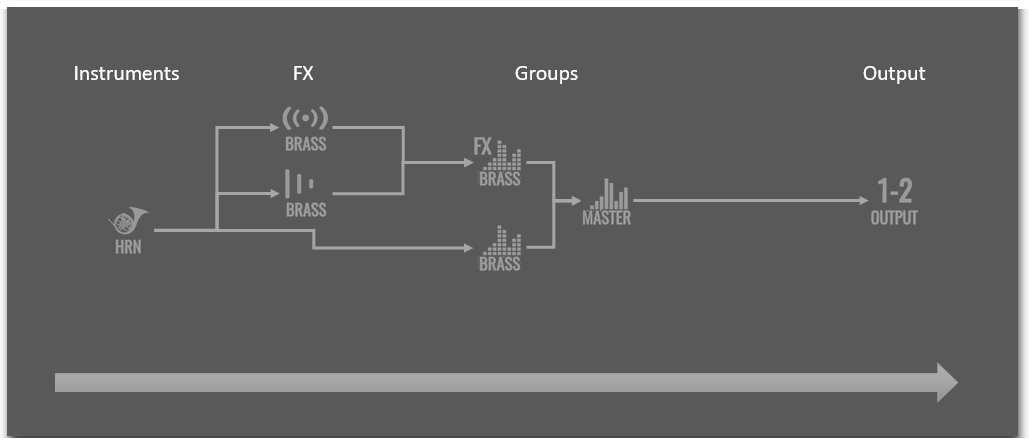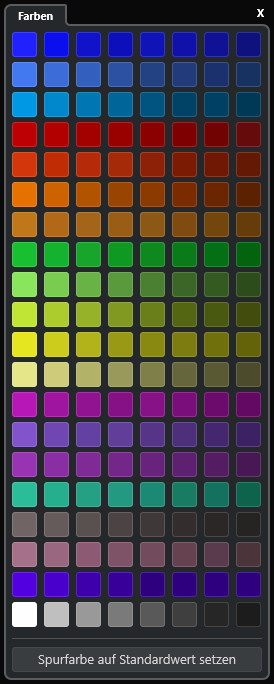In this area, I provide my Cubase templates as free download.
If you own the corresponding libraries, you can get started right away and make music.
Trackmanagement
 There are different approaches to setting up the instruments in a template. For example, one track for each articulation, or one track with all available articulations via key switches. Each concept has its advantages and disadvantages.
There are different approaches to setting up the instruments in a template. For example, one track for each articulation, or one track with all available articulations via key switches. Each concept has its advantages and disadvantages.
My approach is to have one track per instrument for legato (if available), all long and short articulations.
This has the following advantages:
- Easier to balance between short and long articulations because they are split into different tracks
- Different processing and separate export possible
- Direct layering, for example to start a long note with a sharper, short attack
- Better differentiation with TrackDelay
If multiple articulations are available, these can be controlled via key switches using expression maps.
When naming the instruments, keywords were used to enable a better search and find of instruments. In most cases, the syntax looks like this:
- Library abbreviation
- Subheading if necessary
- Instrument in brief (e.g. Bsn for Bassoon, Hrn for Horn) or name of individual patches
- Articulation (Leg, Long or Short)
- Instrument category (e.g. Woods, Brass, Perc or Strings)
Thanks to the standardized naming, all brass instruments can be easily displayed, or all tracks of a particular instrument. It is ideal for use with the Project Logical Editor.
Routing
All templates follow the same routing concept.

Instrument => Group
Group => Master
Master => Output
Each instrument already has up to two effects assigned: reverb and delay. The effects are sent in an effects group and from there they go to the master bus. This makes it easy to export stems without effects, if this is desired for further processing.
Icons
![]() Icons are not absolutely necessary, but I use a customized, simple icons set. The icons show an instrument picture and mostly a short text information.
Icons are not absolutely necessary, but I use a customized, simple icons set. The icons show an instrument picture and mostly a short text information.
At a glance, the picture shows solo or ensemble tracks, and the text indicates the category of articulation, i.e. legato, long, short, or FX.
All icons use the same style and fit well into the arranger or mixer. Icons are also available for groups, effects, VCA, input and output tracks.
The complete icons set can be found in the “Track Pictures” folder within each download package.
Farben
 In addition to the icons, colors also help me to keep a better and faster overview. The starting point was the color scheme in the Spitfires BBC Symphpony Orchestra Discover plugin that I used to get started. So the woodwinds are blue, the brass is red, the percussion is brown, and the strings are green. The use of colors is consistently applied throughout all templates.
In addition to the icons, colors also help me to keep a better and faster overview. The starting point was the color scheme in the Spitfires BBC Symphpony Orchestra Discover plugin that I used to get started. So the woodwinds are blue, the brass is red, the percussion is brown, and the strings are green. The use of colors is consistently applied throughout all templates.
Each color is available in 8 shades, from light to dark. The text labels are customized according to my use.
With a palette of 20 x 8 colors, they offer a wide range of options for every project.
 DE
DE 